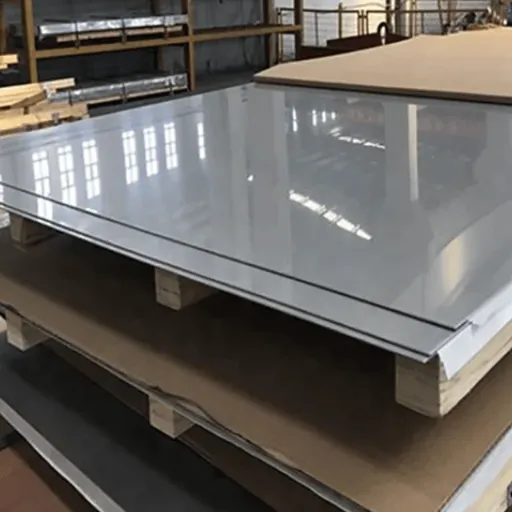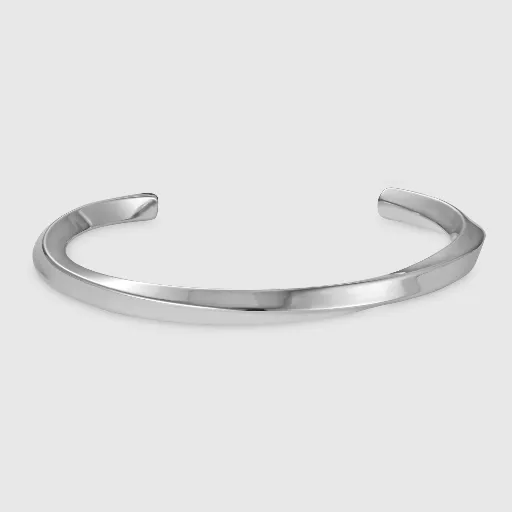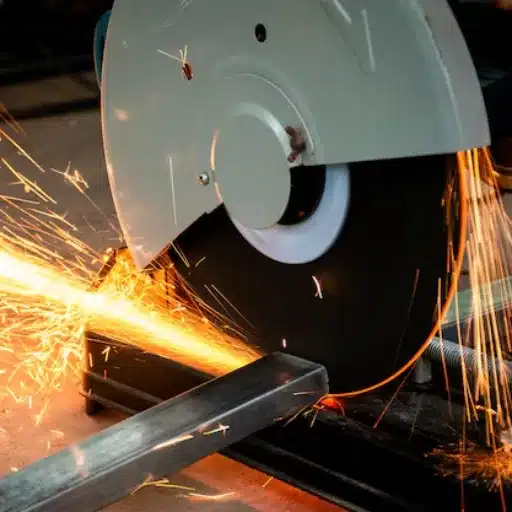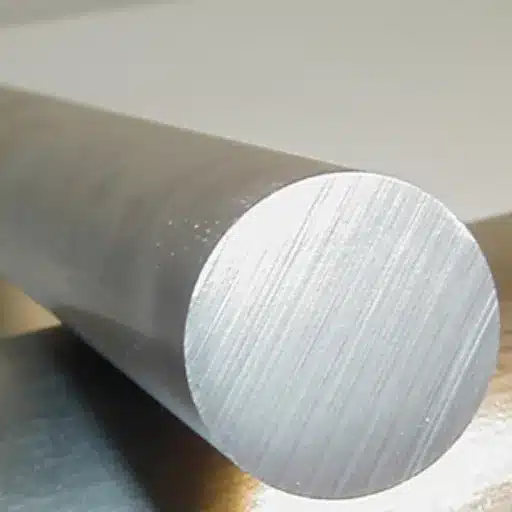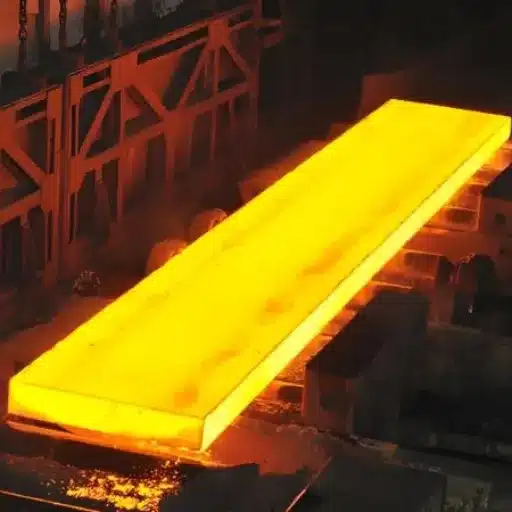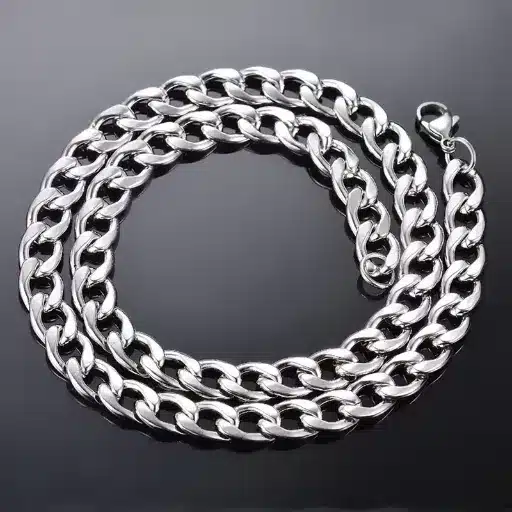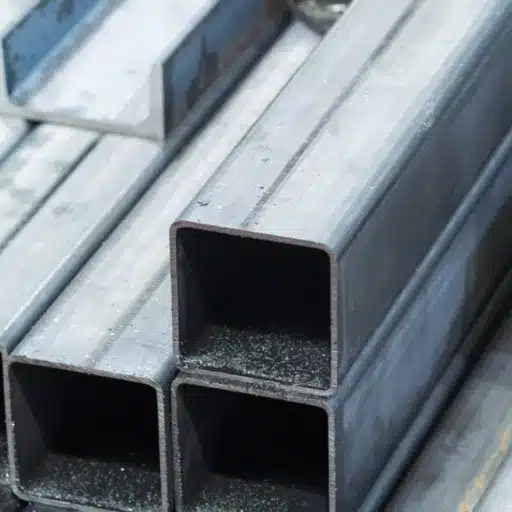Nickel alloy plates and sheets are probably the best materials when it comes to industrial applications requiring strength, durability, and resistance to extreme conditions. The use of these versatile materials is essential in the production process of the industries like aerospace, chemical processing, and energy, where performance and reliability are a must. This article will delve into the characteristics that make nickel alloys unique, their benefits over conventional materials, and the impact of selecting the right supplier on your project’s success. This guide will be beneficial whether you are an experienced expert or a beginner in the industry, as it will offer valuable insights that will aid you in making smart and informed decisions for your upcoming venture.
What Are Nickel Alloy Plates?
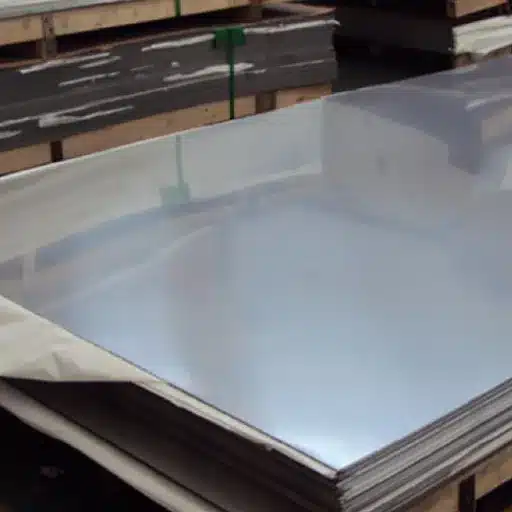
Nickel alloy plates are primarily metallic scales that are produced by mixing metals where nickel is the main component along with other metals like chromium, iron, and mouthing that can improve their property. These plates are famed for their remarkable toughness, chemical resistance, and high-temperature endurance which make them perfect for hard use in a variety of industrial and other fields.
Definition and Composition of Nickel Alloy Plates
Nickel alloy plates belong to a category of metal products that are derived from the combination of nickel with other elements mainly chromium, molybdenum, iron, copper, and cobalt. These alloys are thus designed to have impressive resistance to corrosion, heat, and mechanical stress, making them practically suitable for the most demanding industrial applications. The exact composition of a nickel alloy is determined by its applications but generally speaking nickel content is between 30% and 70%.
Example: Inconel 625 that is an alloy consisting of about 58% nickel, 21% chromium, 9% molybdenum, and a few other elements including niobium and iron. This alloy has excellent resistance to corrosion in chemical and marine environments. Another case is Monel 400, which is yet another widely used nickel alloy that contains about 67% nickel and 30% copper, which imparts to it a rather good resistance to seawater and to acids like sulfuric and hydrochloric acids.
Differences Between Nickel Alloy Plate and Sheet
| Aspect | Details |
|---|---|
| Thickness | The most important difference is thickness. Plates weigh usually more than 0.1875 inches (4.76 mm) which makes them thicker. On the contrary, sheets are thinner than that, and their thickness is normally less than 0.1875 inches (4.76 mm). The thickness difference has a direct strength and usage impact on the two materials. |
| Applications | The thicker profile of the nickel alloy plates has made them applicable in heavy-duty industries such as pressure vessels, marine equipment, and structural components. The thinner sheets, however, are usable in applications that require flexibility and that are using lightweight materials such as chemical processing equipment, heat exchangers, and automotive parts. |
| Manufacturing Process | The production of nickel alloy plates is usually done through hot rolling which increases the strength and durability. The common method for making sheets is cold rolling which results in better finish and tighter tolerances suitable for precision applications. |
Key Insight: Nickel alloy plates and the thickest of the nickel alloys are highly durable and built for the toughest environments, thus, they are very well suited for applications where pressure and wear resistance are required. Sheets, on the contrary, are thinner and provide excellent corrosion resistance, and are also easier to form and weld, thus they are suitable for precision applications.
Nickel Alloy Plates: Key Properties and Benefits
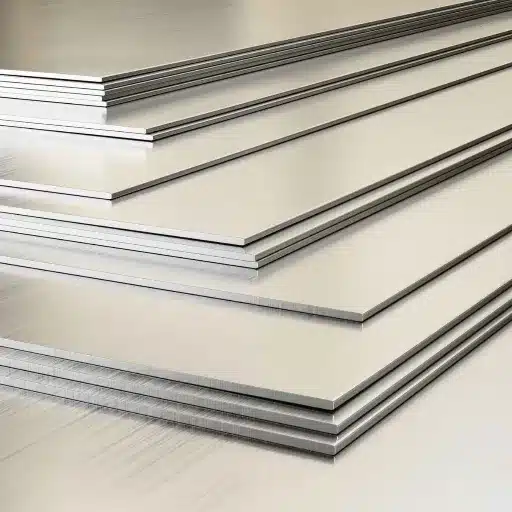
Nickel Alloy Plates Corrosion Resistance
Nickel alloy plates have given the exceptional corrosion resistance that has been attracting them to be the best choice for the most demanding environments. This resistance is given primarily by the high nickel content, which further diminishes their chances of the oxidation and the chemical attack effect on them. For example, alloys like Monel 400 and Hastelloy C-276 are frequently employed in such challenging conditions as marine, chemical processing, and petrochemical industries where they resist pitting, crevice corrosion, and stress-corrosion cracking.
Further to this, recent technological advancements in the alloy production have continued to boost their performance. Industry statistics show that the nickel alloys can be exposed to acids like hydrochloric and sulfuric acids and even strong alkalis at very high temperatures without any damage. For instance, Hastelloy C-276 has worked to be effective in conditions with a pH level as low as 1, thus being the most durable material when compared to steel or other conventional materials.
Nickel Alloy Plates Mechanical Properties
Nickel alloy plates present a combination of extraordinary mechanical characteristics that render them unalternable in the heavy industry. Concerning the maximum tensile strength, ductility, and toughness, these materials never fail to deliver. Depending on the alloy composition, nickel alloys usually show tensile strengths from 485 MPa (70 ksi) up to more than 1,380 MPa (200 ksi), thus allowing the engineering to require the specific alloy according to the application.
One more point worth mentioning is the ability of these materials to resist creep and fatigue at high temperatures, with an especially long life. Inconel 718 and other nickel alloys such as Hastelloy1750 are examples of materials with properties to last under high temperatures of 1,000°F (538°C) or even more without significant reduction in their mechanical efficiency. This makes them ideal for use in the aerospace industry where thermal and mechanical stresses are very high.
Nickel Alloys in Different Industries
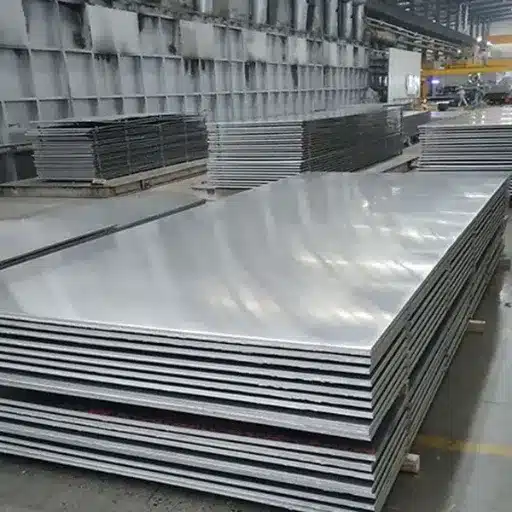
Nickel alloys are used frequently in the aerospace, power generation, chemical processing, and marine industries on account of their remarkable tensile strength, good heat resistance, and excellent resistance to corrosion.
Aerospace Sector
Nickel alloy plates impart the outstanding attributes of heat resistance, strength, and corrosion resistance to the aerospace industry—most importantly—by the very fact that they’re used in the manufacture of such critical and highly demanding parts as jet engines, turbines, and exhaust systems which are subjected to the most extreme conditions. For example, up to 50-60% of the total weight of a modern aircraft engine is made up of nickel-based superalloys, which not only signifies the reliability and efficiency of the aerospace systems but also their indispensable role in the whole process.
Industry Impact: The turbine and disc application of nickel alloys, for example, allows engines to run at higher temperatures which in turn improves fuel consumption and cuts emissions. Besides, these substances are of paramount importance in the production of parts that cannot handle much wear and thus are deserted or over time-like landing gear and structural support frames. A 6.57% CAGR projected number indicates that the global aerospace market will grow from 2023 to 2030, which in turn means a significant rise, of nickel alloys demand thus the ongoing innovations to meet ever-changing industry needs.
Marine Industry
The marine and offshore industries cannot do without nickel alloys, mainly because of their remarkable resistance to corrosion and ability to endure unpleasant oceanic environmental conditions. The materials used in shipbuilding, offshore oil and gas platforms, and desalination plants suffer greatly from the tricky combination of saltwater and chloride-rich conditions. Monel and Hastelloy are nickel alloys that not only withstand but also excel in these conditions by providing long-term durability and lower maintenance costs.
Market Insights: Market analysts have revealed that global marine-grade materials market is to witness rapid growth and one of the reasons is the cited demand from the users of nickel-rich alloys. The marine propulsion market worldwide will alone be worth $14.7 billion by 2028, with a steady CAGR of 4.8% increase from 2021. Nickel alloys are of paramount importance in the manufacture of components such as propellers, shafts, and heat exchangers where the resistance to wear and corrosion are considerable factors. Their high strength-to-weight ratio is also a plus in that it leads to improved fuel efficiency for marine crafts and thus lower environmental pollution.
Nickel Alloys Superior to Other Metal Alloys
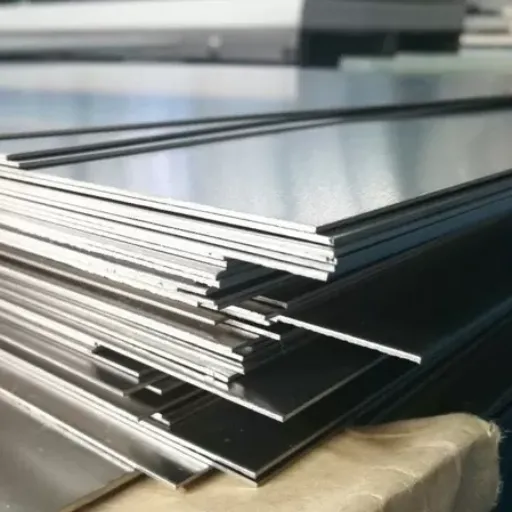
In terms of performance, I would definitely say that nickel alloys come out on top when compared to other metal alloys, especially in places where corrosion resistance, high strength, and durability are factors to consider.
Nickel Alloy vs. Stainless Steel
Resistance to Corrosion
Nickel alloys are known to be the ones to endure the test of usage especially there where corrosion is to be expected. Their resistance to corrosion is so prominent that during the process even the weakest points like pitting, crevice corrosion, and stress corrosion cracking, would be caught and eliminated; meanwhile, they would be taking stainless steel along with them, often, due to dealing with harsh chemicals and marine settings, the latter, to be precise. On the other hand, stainless, though, is not totally resistant to getting corroded, it may, at least in extreme cases, show some weaknesses—especially, in those containing chlorides or being acidic.
Resilience and Strength Against Heat
Nickel alloys are top-notch when it comes to high-temperature processing as they are able to maintain their physical and mechanical properties and even their strength at elevated temperatures. They are also the go-to materials in aerospace, power generation, and chemical industries, as these will always be the areas demanding the use of non-reactive metal. Conversely, stainless steel might give in to losing its structural integrity when dealing with extremely high heat.
The Benefits of Nickel Alloys in Applications
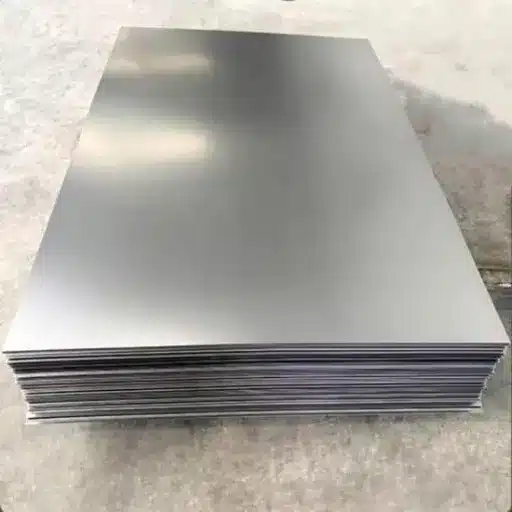
1
Corrosion Resistance
Nickel alloys resist corrosion very well even in very harsh environmental conditions, example situations with other materials being totally or in part, in vain dog. In the case, they are in chemical processing plants, marine environments, and oxidizing conditions where high temperatures are being used. With such resistance to acids, alkalis, and other corrosive agents, the metals win longer lifespans and hence lower maintenance costs. According to research, nickel-based alloys can double if not triple the lifespan of ordinary carbon steel in corrosive environments.
2
High-Temperature Performance
Nickel alloys are the workers of the industry that keep on giving as they do so on their own way, that is retaining strength and stability, even at very high temperatures, thus they are the ones that no application like power generation, aerospace, and nuclear reactors can ever do without. Nickel alloys like Inconel, for instance, have the ability to endure higher temperatures of 1300°F (704°C) while at the same time retaining great mechanical properties. This exceptional heat resistance helps to make demanding processes both safe and efficient operationally.
3
Strength and Durability
The power of nickel alloy plates has a lot of weight when pointing out the positives. They are characterized by strength and toughness, which help them not to give up under extreme mechanical stresses. For instance, nickel-chromium alloys are definitely the best choice for the toughest roles of turbine blades and jet engines, wherein their extreme pressure and fatigue resistance literally speaks for itself.
Future Trends in Nickel Alloy Plate Usage
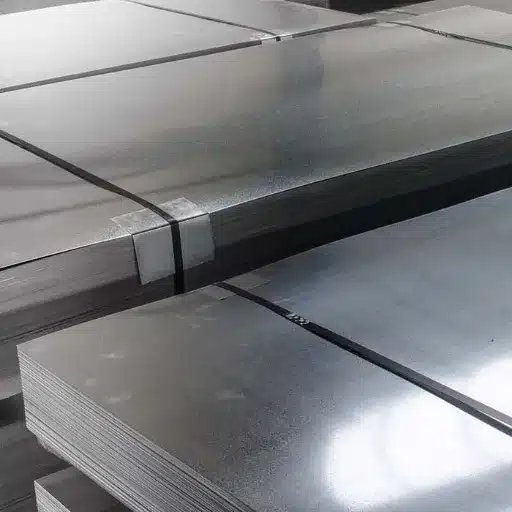
Emerging Technologies in Nickel Alloy Plate Applications
Advanced manufacturing techniques and the usage of emerging technologies are going to a great extent in terms of the application of nickel alloy plates. One of the leading innovations is the use of additive manufacturing (AM) which is popularly referred to as 3D printing. The most significant benefit of AM is that it uses less material in producing very complex components. AM nickel alloy powders are the main players because of their great durability and heat-resistance. Recent industry research claims that the global additive manufacturing market value is going to grow at an astonishing CAGR of 23.3% in the period 2023 to 2030 with the aerospace and medical industries being the main contributors.
A hydrogen production and storage system where nickel alloy plates are used is another attractive innovation, which makes the use of nickel alloy plates more versatile and a necessity in sustainable energy production. Nickel’s property of being resistant to corrosion and high-temperature environments makes it indispensable for electrolyzers which are used to produce green hydrogen. Market analysts are of the opinion that the global electrolyzer market will be worth $23.6 billion by 2030 due to the shift towards clean energy sources.
Market Demand and Sustainability
Nickel alloy plates have exhibited an uptrend in market demand during the past couple of years, their wide application in industries such as aerospace, automotive, energy, and industrial processing being the main reason for this uptrend. Recent reports inform that the global nickel alloy market was approximately $13.9 billion in value in 2022 and is expected to grow to $17.4 billion by 2027, which corresponds to a compound annual growth rate (CAGR) of 4.5% during the whole period of forecasting. This is mainly because of the increasing concerns for operational efficiency, emission reduction, and high-quality application durability.
Sustainability Focus
Sustainability is one of the key factors pushing the demand for nickel alloys. Nickel alloy plates are now being used in a lot of renewable energy sources such as wind, solar, and hydrogen production, where the materials to be used have to withstand very harsh environmental conditions and at the same time meet the sustainability objectives because of their corrosion resistance and recyclability. For example, nickel alloys are used in the production of parts for hydrogen electrolyzers and offshore wind turbines thereby helping the industries move towards energy-efficient systems. In addition, the recycling rate of nickel is close to 68%, which is a clear indicator of its being a sustainable and eco-friendly material in the long run.
Reference Sources
-
DataM Intelligence
- Title: Nickel Alloys Market Size, Share, Industry, Forecast and …
- Description: This source discusses the growth of the global nickel alloys market, highlighting its applications in aerospace, automotive, and energy sectors.
- Link: DataM Intelligence
-
Data Bridge Market Research
- Title: Global Nickel Alloy Market Size, Share, and Trends …
- Description: This report emphasizes the use of nickel alloy plates in offshore oil and gas industries due to their resistance to corrosion and stress.
- Link: Data Bridge Market Research
-
Verified Market Reports
- Title: Nickel Vanadium Alloy Target Market Insights
- Description: This source provides insights into the market trends and growth projections for nickel alloys, including their industrial applications.
- Link: Verified Market Reports
Frequently Asked Questions (FAQs)
What is the significance of the ASTM grades for nickel alloy plates?
The ASTM grades are of great importance to nickel alloy plates because they set the standards and specifications for the plates, thus securing their quality and performance. The grades also assist the manufacturers to deliver the products that have certain characteristics such as being strong, resistant to corrosion, and good for welding. The designers and engineers must know these grades very well since they have a big role in the selection of materials for their projects.
How do I choose the right nickel alloy sheet for my project?
The right nickel alloy sheet for your project should be chosen after taking into account the factors like the atmosphere in which it will be, how much corrosion resistance you will need, the strength of the material and its size. For example, marine applications require high corrosion-resistant materials while other applications may need easy-to-form and weldable materials. A good supplier might also be a great help in picking the right one.
Are nickel alloy plates weldable?
Most nickel alloy plates can be welded, which makes it quite simple to manufacture and outsource them. However, differences in weldability exist between different alloy compositions. One needs to apply the right welding techniques, use proper filler, and stay consistent in practice to ensure the weld and properties of the alloy are preserved.
What is the difference between nickel alloy plates and stainless steel plates?
Nickel alloy plates and stainless steel difference plates mainly come down to their composition and properties. The former generally gives an excellent edge over the latter in terms of resistance to corrosion and thus nickel plates can be used more cost-effectively in harsh environments. The strength and lower costs of stainless steel plates may be the pros to consider in their use. The decision should be based on the specific application requirements including the resistance to temperature, pressure, and corrosion.
How is quality control maintained in the manufacturing of nickel alloy plates?
The quality control measures that are taken during the production of nickel alloy plates are strict testing and inspection operations which include checking dimensions, evaluating mechanical properties and measuring resistance against corrosion. The manufacturers make use of full traceability so as to guarantee that each plate is up to standard and specification all through the production process.

